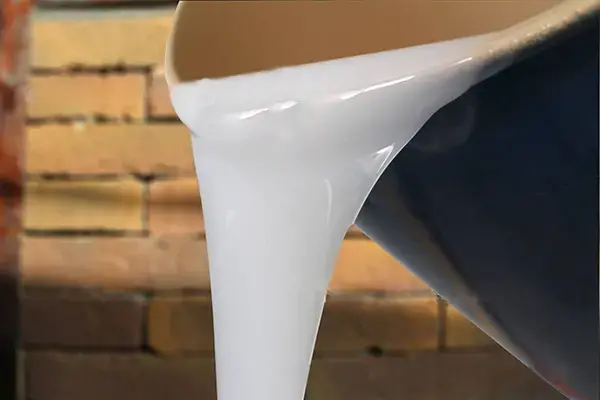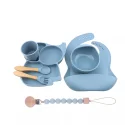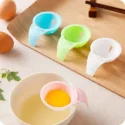Silicone product manufacturer talks about the difference between silicone, TPE, TPU, PVC, and rubber
2021-08-17
The reasonable choice of materials needs to be considered from the product use environment and the performance of the material. The main properties are: hardness, elasticity, corrosion resistance, weather resistance, friction coefficient, whether it is easy to crack, coloring performance, high (low) temperature resistance, Cost, processing technology, etc. If it is used in daily necessities, baby products, etc., we need to pay attention to factors such as whether the materials are harmful to the human body, whether there is an unpleasant smell, and whether the hand feels comfortable. Special conditions also need to consider electrical conductivity, (for example, when a silicone product manufacturer makes a Silicone button, it can be made when carbon black is added to the Silicone.) Thermal conductivity, radiation resistance, light transmittance, etc.
Silicone:
Silicone is a kind of thermosetting elastomer. It has the advantages of safety and non-toxicity. It is insoluble in water and any solvents, non-toxic and tasteless. It is chemically stable. It does not react with any substances except strong alkalis and hydrofluoric acid. It has high adsorption performance and heat It has good stability and stable chemical properties. It was first widely used in adult products and food products. Due to the superiority of silicone performance, it is increasingly recognized for use. It is used in medical, automotive, and 3c electronic waterproofing. The injection molding process of liquid silicone is mainly used. The processing technology of silica gel products is relatively complicated, and a series of functions such as rubber mixing, molding, and vulcanization are needed to make products. Silicone products belong to
Thermosetting rubber will not melt when heated after vulcanization, so it cannot be recycled directly for processing. The cost of silicone products is usually higher than that of TPE. In terms of hardness, silicone generally has a hardness between 0A and 70A, while TPE generally has a hardness of 0A-100A, and the softest can reach 000 degrees or 000000 degrees, so TPE is softer, and silicone has a stronger shape. Silicone has an advantage over TPE in terms of high temperature resistance. The temperature resistance of silicone is generally between 200°C and 300°C, while TPE is generally resistant to high temperature 130-150°C in theory.
In the meantime, no matter how high it is, it will age and crack. The price of silicone is generally more than 30,000 per ton, while the general price of TPE is between 13,000 and 30,000. TPE is more advantageous in price, except for special TPE materials, such as halogen-free flame retardant, food-grade and other characteristics. When silicone product processing manufacturers buy silicone raw materials, they generally also require the manufacturers to provide the raw material flame-retardant UL certification and food-grade certification.

TPE:
The full name of TPE is Thermoplastic Elastomer, which is a thermoplastic elastomer material. The heat resistance of TPE is not as good as that of silicone. As the temperature rises, the physical properties decrease greatly, so the scope of application is limited. At the same time, the compression deformation, elastic recovery, and durability are inferior to that of silicone, and the price is often higher than that of silicone.
TPU:
The full name of TPU is Thermoplastic polyurethanes, which is a kind of thermoplastic polyurethane elastomer rubber, and its hardness range is usually in the S Shore hardness 60A-70D (currently there are soft TPU with a hardness of about 45A abroad, but the price is quite expensive), and the TPE hardness range It can be varied within the Shore hardness A Scale range of 0-100. Therefore, it can be said that the hardness range of TPE is low to medium hardness, while the hardness of TPU is medium to high hardness. The elasticity and elastic recovery performance of TPU (resistance to yaw and creep) are better than TPE. Mainly, the material structure of TPU is a homogeneous polymer structure, which belongs to the category of polymer resins. TPE is a multi-component blended alloy material with a multi-phase structure. High-hardness TPE is prone to product deformation. In all hardness ranges, TPU exhibits excellent elasticity and products are not easily deformed.
PVC:
PVC is polyvinyl chloride. It used to be the world's largest general-purpose plastic with a wide range of applications. PVC itself is a hard material. After adding a plasticizer, the plastic product can be soft, easy to bend, fold, and flexible. For PVC, it is often expressed (P) according to the percentage of added plasticizer and PVC raw material, P%.
There are common materials and environmentally friendly materials for PVC materials, also called ATBC-PVC, while silicone can pass ROHS certification and is environmentally friendly.
Silicone products are generally made relatively transparent, with a relatively small burning smell, and the products are powdery, while PVC products will turn black after being burned with fire, and have an unpleasant smell when burned. Silicone products are more heat-resistant and cold-resistant than PVC products. Silicone products can be placed in a microwave oven. Heating, but PVC can’t.

rubber:
There are many types of rubber, such as natural rubber, butadiene rubber, styrene butadiene rubber, propylene rubber, and of course also silicone rubber. Silicone rubber is one of the specific types of rubber. Silicone is the abbreviation for silicone rubber.
Silicone and rubber are two materials. Under the same application environment, both silicone and rubber can be used. However, as the physical environment and requirements change, there will be a significant gap in the performance of the two materials, but it takes time Can be presented. Silicone is rich in coloration and can be made into a variety of different colors. Most rubber products are black, but other colors can occasionally be seen.
Above is the introduction of various soft rubber materials. After the above description, silicone has outstanding performance in all soft rubbers, high and low temperature resistance, UV resistance, etc. LYA is a silicone product processing manufacturer in Shenzhen, China and has 20 years experience in this industry. We have a professional technical research and development team, fully equipped, welcome to customize your silicone products. Quotation within 2 hours, 24-hour service, and one-day samples will give you satisfactory service and product quality. Welcome to inquire!
Exploring the Versatility of Silicone Bibs: Care and Maintenance Tips







